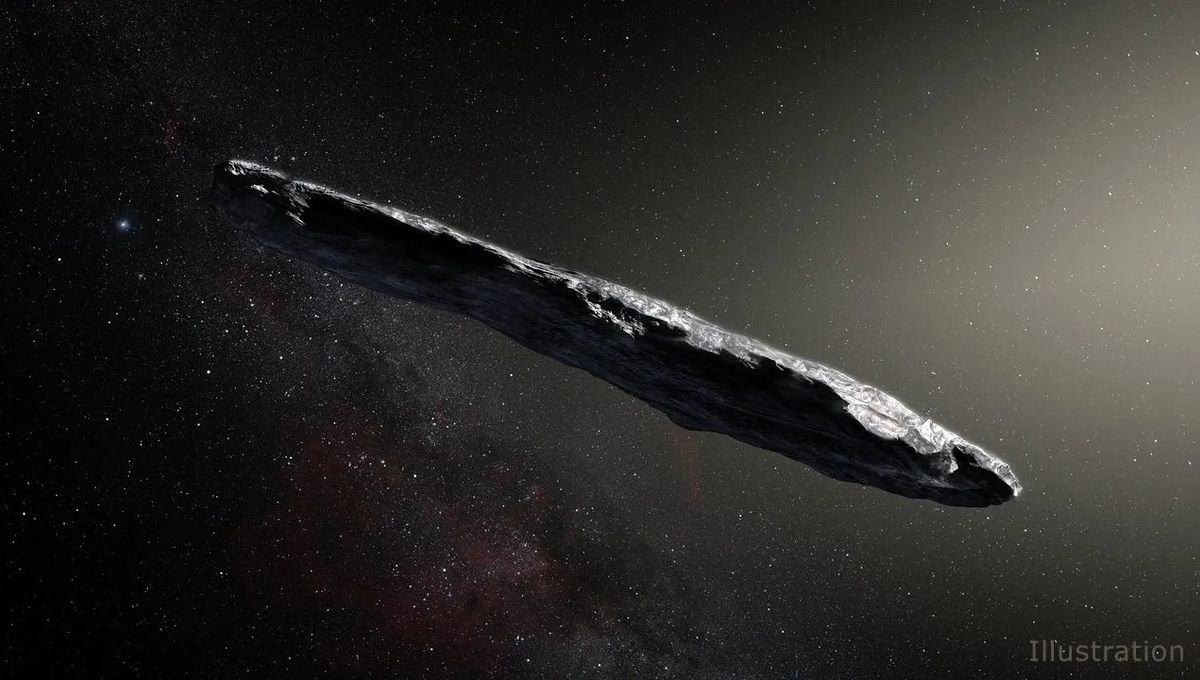
So-called dark comets exist in two classes, large objects in the outer Solar System and smaller ones closer to the Sun, a new paper reveals. Dark comets are not a form of dark matter, but objects with no visible tail or outgassing, but whose orbits reveal comet-style acceleration. It’s a category that includes ‘Oumuamua, the first recorded interstellar visitor to the Solar System, and its members may have delivered water and other precursors of life to Earth.
Comets and asteroids were once thought easy to distinguish, but dark comets are one of the new categories springing up to fill the gray zone in between. One recent study claims they may actually be more common in Earth’s vicinity than either true asteroids or visible comets.
Comets are mostly made of ice, with smaller amounts of rock and dust, so when they approach the Sun the ice turns to gas. The most obvious consequence is the formation of the tail, but on a subtler level the escape of gas, and the dust carried with it, shifts the comet’s orbit like a very slow rocket. Escaping material provides a push in the opposite direction by Newton’s third law, causing the main body to accelerate.
Asteroids, being rock that doesn’t turn to gas without getting a great deal closer to the Sun, don’t do either of these things, excluding some acceleration from the Yarkovsky effect. So the discovery of objects that show non-gravitational acceleration, but no tail, posed a problem, at least for people obsessed by binaries.
Objects that look like asteroids but show non-gravitational acceleration beyond Yarkovsky influences were dubbed dark comets. All the early finds are small (with one exception less than 100 meters [330 feet] wide), have fairly circular orbits closer than the main asteroid belt, and rotate rapidly. It was thought this rotation was key to their acceleration, for example by spinning so fast they throw off rocks.
However, Dr Darryl Seligman of Michigan State University, East Lansing, is part of a team that doubled the number of known dark comets from seven to 14 and investigated their similarities and differences. “We had a big enough number of dark comets that we could begin asking if there was anything that would differentiate them,” Seligman said in a statement. “By analyzing the reflectivity and the orbits, we found that our Solar System contains two different types of dark comets.”
Seligman and colleagues did not discover these additional dark comets. Instead, they ran closer investigations of the orbits of previously known objects, finding some showed the characteristic non-gravitational acceleration. Images of each were double-checked to confirm they were not just very faint ordinary comets.
The new category consists of dark comets more than 100 meters wide that lurk further. Although their average orbital distances are similar to those of the main-belt asteroids, their orbits look more like Jupiter-family comets; that is, quite stretched out but lasting less than 20 years. Most Jupiter-family comets are thought to have once had much longer orbits originating in the outer Solar System, having been redirected by a close encounter with Jupiter. It’s not known whether the outer dark comets have a similar history.
The Jupiter-family dark comet group currently consists of of four of the objects whose non-gravitational acceleration Seligman and coauthors identified, plus 2003 RM. The first dark comet to be discovered, 2003 RM’s size and orbit had previously been an anomaly.
The authors acknowledge some dark comets may in fact have shown weak cometary activity, but at times when we were not monitoring them closely enough to see. While they recommend further observations to address this, they doubt the entire category will be eliminated in this way.
The discovery of any new category of objects excites scientists, but the team are particularly interested in what the outer dark comets might tell us about our own past. “Dark comets are a new potential source for having delivered the materials to Earth that were necessary for the development of life,” said Seligman. This includes Earth’s water, which is thought to have at least partially from comets. “The more we can learn about them, the better we can understand their role in our planet’s origin.”
There is one more object that fits the characteristics of dark comets, but hasn’t been included in this research. “‘Oumuamua was surprising in several ways,” said co-author Dr Davide Farnocchia of NASA’s JPL. “The fact that the first object we discovered from interstellar space exhibited similar behaviors to 2003 RM made 2003 RM even more intriguing.” Nevertheless, while ‘Oumuamua’s nature will probably be debated until we find other examples that match it closely, it’s likely to have a quite different composition from either dark comet class.
Dark comets are different from another intermediary category between asteroids and comets, known as active asteroids, although there may be some overlap. Active asteroids are objects without ice that produce a cloud of dust around them, for a variety of reasons, some still unknown. 3200 Phaethon, source of the Geminids, is the original example. We’ve never seen a tail from Phaethon, but producing a meteor shower is normally a job for comets, and the sodium fizzing out of Phaethon’s cracks is certainly a bit comet-like.
The study is published in Proceedings of the National Academy of Sciences.
Source Link: A New Type Of Dark Comet May Have Shaped The Early Earth